In baking, using the right loaf pan size is very important. A pan too small might cause your batter to overflow while one too big might affect the rising of your loaf. his guide will help you choose the perfect loaf pan size.
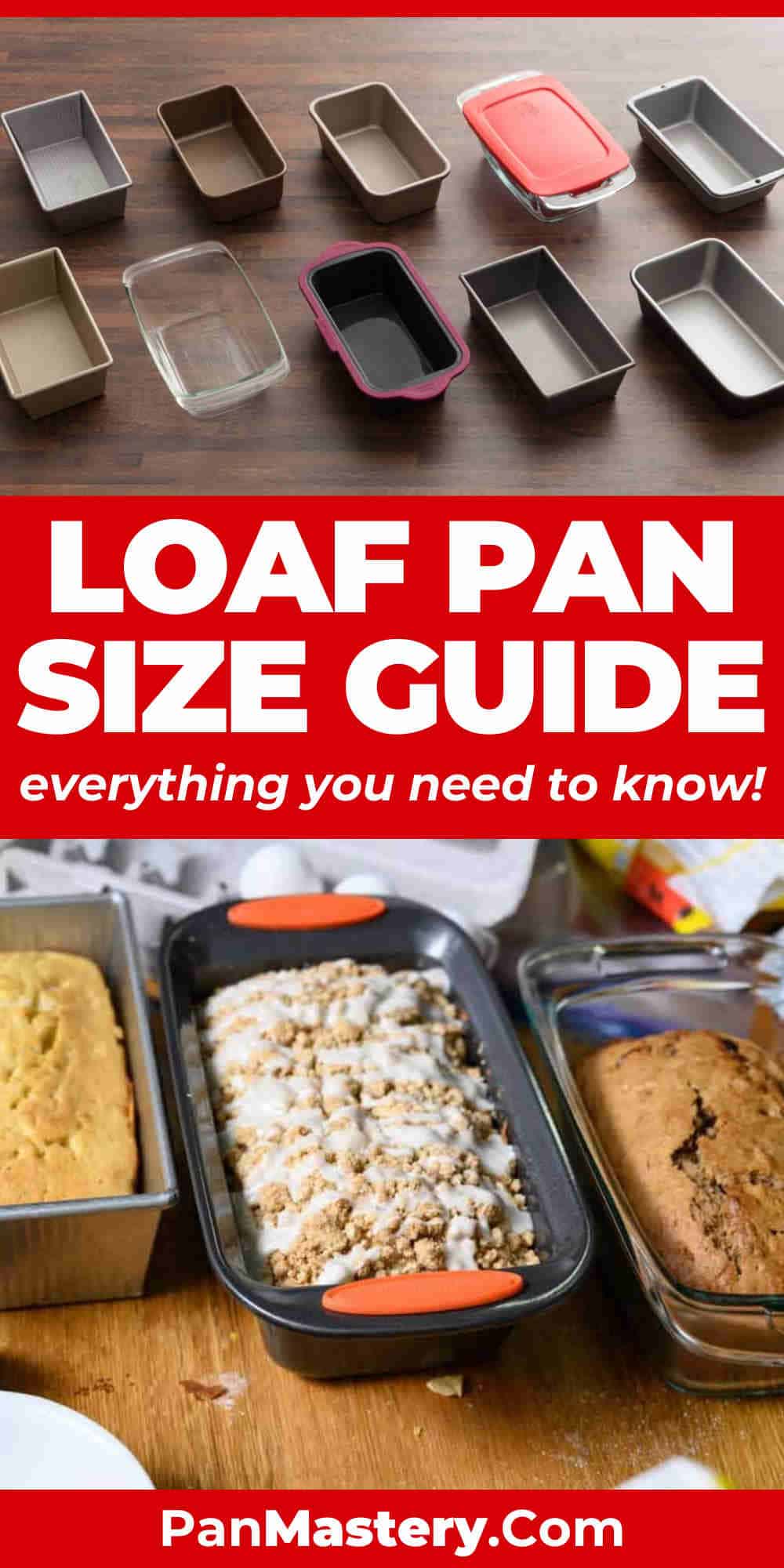
Why is it important to pick the right loaf pan size?
We cannot stress this enough: Choosing the right loaf pan size is crucial especially if you wish to achieve your desired baked creation. Why?
Your pan helps determine how your loaf will turn out to be. Whether you plan on baking banana bread, the usual bread loaf, or a recipe you wish to try, you need a loaf pan that is just right for your batter.
If your loaf pan is too small, your batter might overflow, leading to an overflow in the baked bread as well. You will end up with an unpleasant-looking bread or worse, a burnt one. On the other hand, if your loaf pan is too big, you might come across problems when your bread rises.
If you’re new to baking, you might not yet know how to choose the right pan size. Worry not as learning this skill is easy and with the help of this complete guide to loaf pan size, you will get better at it in no time.
What is the standard size loaf pan?
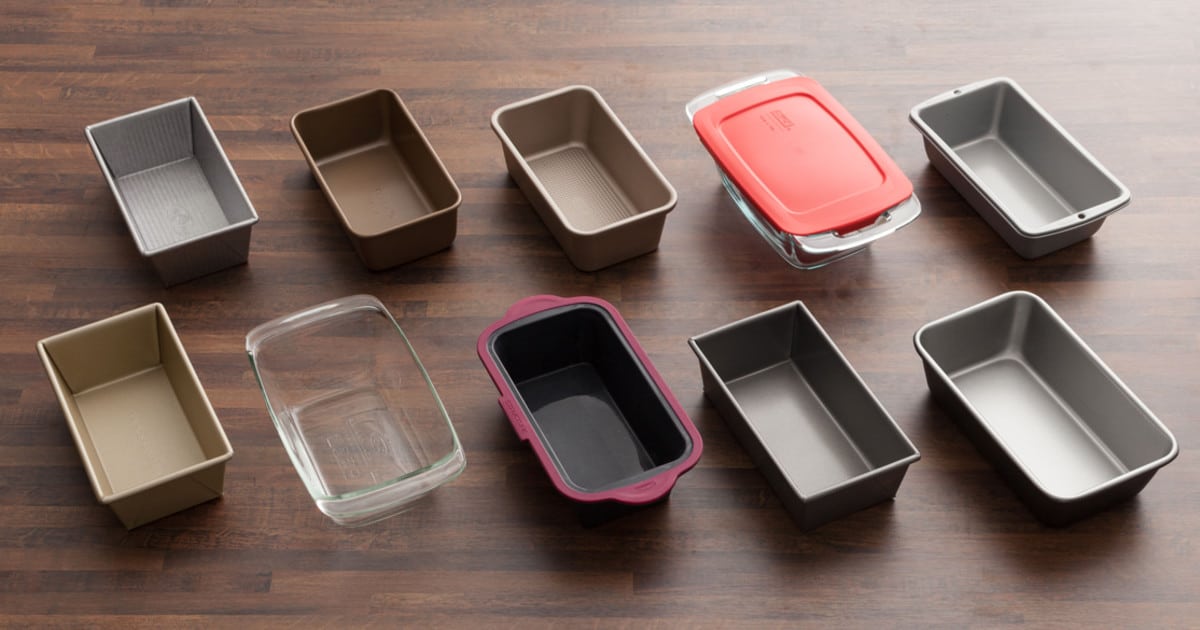
Let’s go to the basics. Bakers and baking enthusiasts have a loaf pan size which they consider the standard.
The standard size loaf pan usually has these dimensions: 8 ½ x 4 ½ x 2 ½ inches. This is the size you will find in baking stores and is what bakers traditionally use.
However, you may also find a bigger loaf pan that measures 9 x 5 x 2 ½ inches. There are some who consider this their standard size.
Just looking at the numbers will tell you that there is only a minimal difference between the two sizes. The truth of the matter is, this difference is significant enough when it comes to baking. If you put the same amount of batter into the two pans, you will end up with different results.
The ⅔ Batter Rule
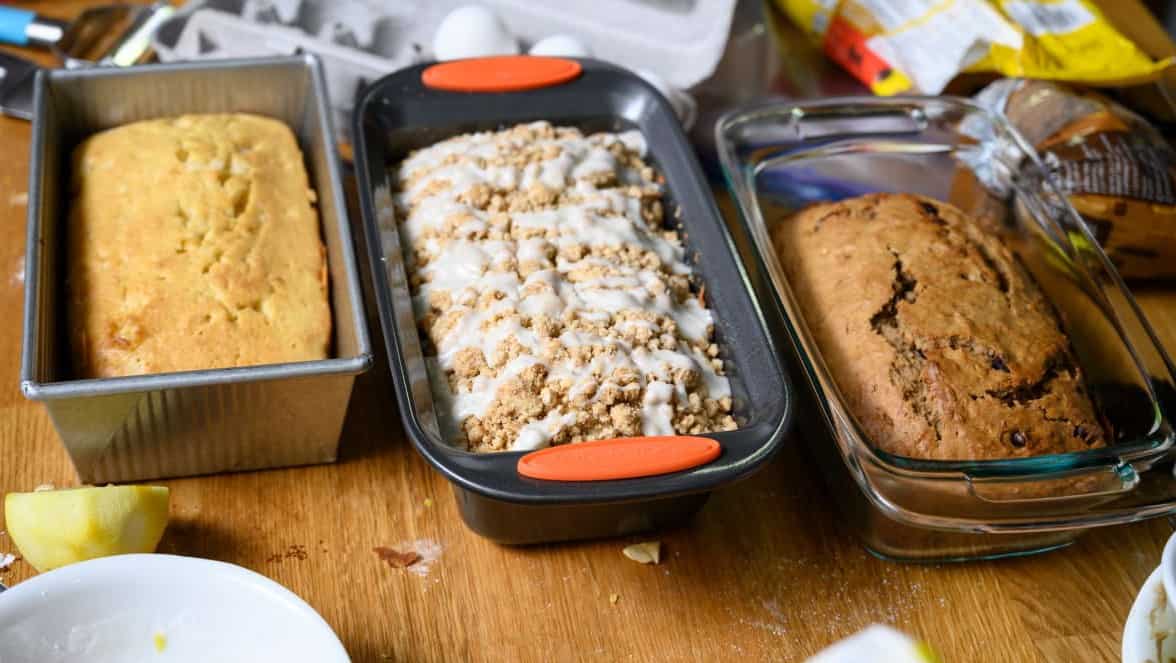
Are you following a recipe? If yes, chances are, the recipe will state what loaf pan size you need for your batter. In the event that your recipe does not indicate a loaf pan size or if you are just experimenting, simply follow the ⅔ batter rule.
Considered a rule of thumb for bakers, your batter should only occupy ⅔ of your loaf pan to get the best possible baked outcome.
Now, what if you still have excess batter? Don’t throw away your excess batter if you go beyond ⅔ of your loaf pan. Just get a muffin pan and put your extra batter there. This ensures both the quality of your loaf and that no excess batter goes to waste.
Loaf Pan Sizes and Volume
Aside from what we consider the standard loaf pan size, there are other sizes as well that you may come across in your baking journey. In this complete guide to loaf pan size, you will also learn about the other loaf pan sizes and their corresponding volume.
Loaf pans differ in length, width, and height. The most common height among loaf pans is 2 ½ inches while length and width may vary from 7 to 13 inches or even more.
You can also find mini loaf pans that are significantly smaller compared to other pans.
The volume of batter each loaf pan can hold also differs. For example, the standard loaf pan is said to accommodate around 5 cups. There are bigger pans that can even accommodate up to 12 cups.
Below is a cheat sheet of different loaf pan sizes and volumes of batter.
| Description | Pan Size | Volume |
| Mini Loaf Pan | 2¼ x 4 x 1¼ inches | ⅔ cup |
| Loaf Pan | 7 ⅜ x 3 ⅝ x 2 inches | 3 cups |
| Loaf Pan | 8 x 4 x 2½ inches | 4 cups |
| Loaf Pan | 8½ x 4½ x 2½ inches | 6 cups |
| Loaf Pan | 9¼ x 5¼ x 2½ inches | 7 cups |
| 9” Pullman Loaf Pan | 9 x 4 x 4 inches | 10 cups |
| 1.5 lb Loaf Pan | 10 x 5 x 3 inches | 10 cups |
| 13” Pullman Loaf Pan | 13 x 4 x 4 inches | 12 cups |
How do I measure the volume of my loaf pan?
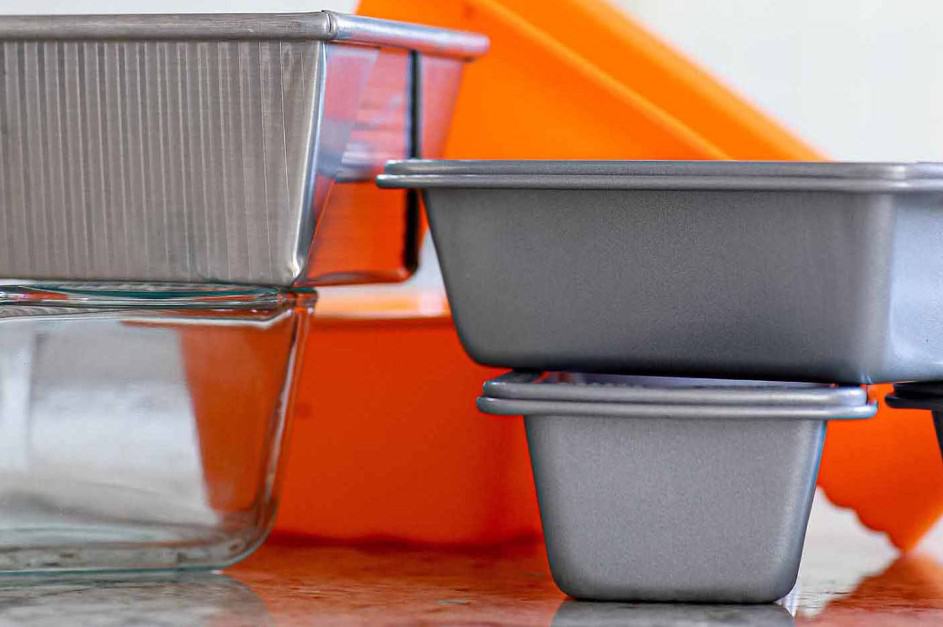
If you are still unsure of how much batter you need to put in your pan or the size of your pan, you can simply measure it first before pouring in the batter. This will save you the hassle of cleaning up the mess.
Measuring pan volume with water
Perhaps the easiest way to check how many cups of batter your loaf pan can hold is by using water. The end goal in mind is to only occupy ⅔ of your loaf pan to ensure that your bread bakes well.
That being said, first, pour water into your pan and fill only ⅔ of it.
Once you have water in your pan, get a liquid measuring cup. Pour the water from the pan into your measuring cup to determine how many cups of water it can hold.
Through this, you can see how many cups of batter you can put in your loaf pan.
Measuring pan volume with a measuring tape
You can also measure the volume of your loaf pan by taking manual measurements. This requires patience and some math.
First, take the dimensions of your loaf pan. Measure its length, width, and height by putting the measuring tape from edge to edge.
Remember to measure the inside edges and not from the outside. The thickness of loaf pans differs so if you measure the outside edges, you will not get accurate measurements.
Next, multiply all three measurements. To get the volume, you multiply length x width x height.
Pan and Dough Ratio
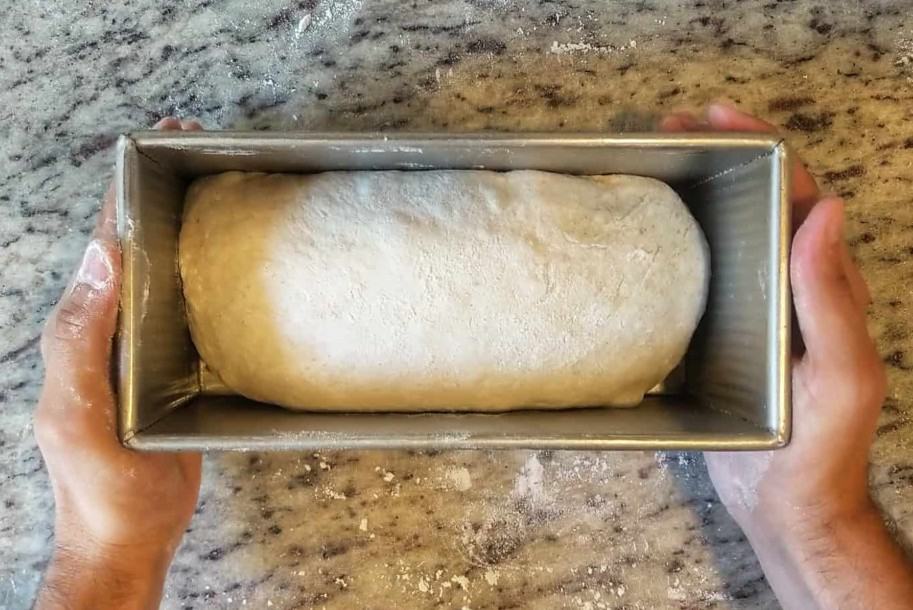
Some recipes for baked bread require you to use yeast. Unlike batter, the dough is usually measured by weight and not by cups.
You might wonder how much dough you need for your loaf pan size. While recipes vary from one baker to another, some believe in the 4:1 ratio.
To get this, you need to get the volume of your pan. As mentioned above, you can get this by multiplying your length, width, and height. You can also determine this through the water method.
Once you have your volume in milliliters, divide it by 4. That is how much your dough should weigh in grams.
For example, if you have a loaf pan that can hold 1,800 ml of water, then divide it by 4. You will get 450 ml or 450 g of dough.
Watch this video for a better explanation of this golden ratio:
Scaling Bread Recipes
Do you have a bread recipe on hand but don’t have the loaf pan size for it? Don’t worry! This complete guide to loaf pan size will also teach you how to scale your recipes.
To do this, you need to identify the baker’s percentages, determine the volume of your loaf pan size, and calculate all these to come up with a new recipe.
Check out this comprehensive tutorial on how to scale bread recipes:
Factors in Choosing a Loaf Pan
Aside from the loaf pan size, you also have to consider other qualities of a loaf pan before deciding on which one to use for your recipe.
Material
Loaf pans can be made of different materials such as metal, glass, and aluminum, to name a few. Each material has its set of qualities that may affect the baking process and eventually, your baked product.
Durability
If you are looking at buying a loaf pan, then you should consider how durable that loaf pan is before investing. For pans that will last long, try glass loaf pans as they are safe to use in the microwave, freezer, and dishwasher.
Bakers usually use pans made of metal. Though preferred, these metal pans are prone to scratches and you may need to wash them by hand.
Some also prefer silicone pans as they are lightweight and easy to unmold and clean. The downside is that this kind of pan tends to absorb odors over time.
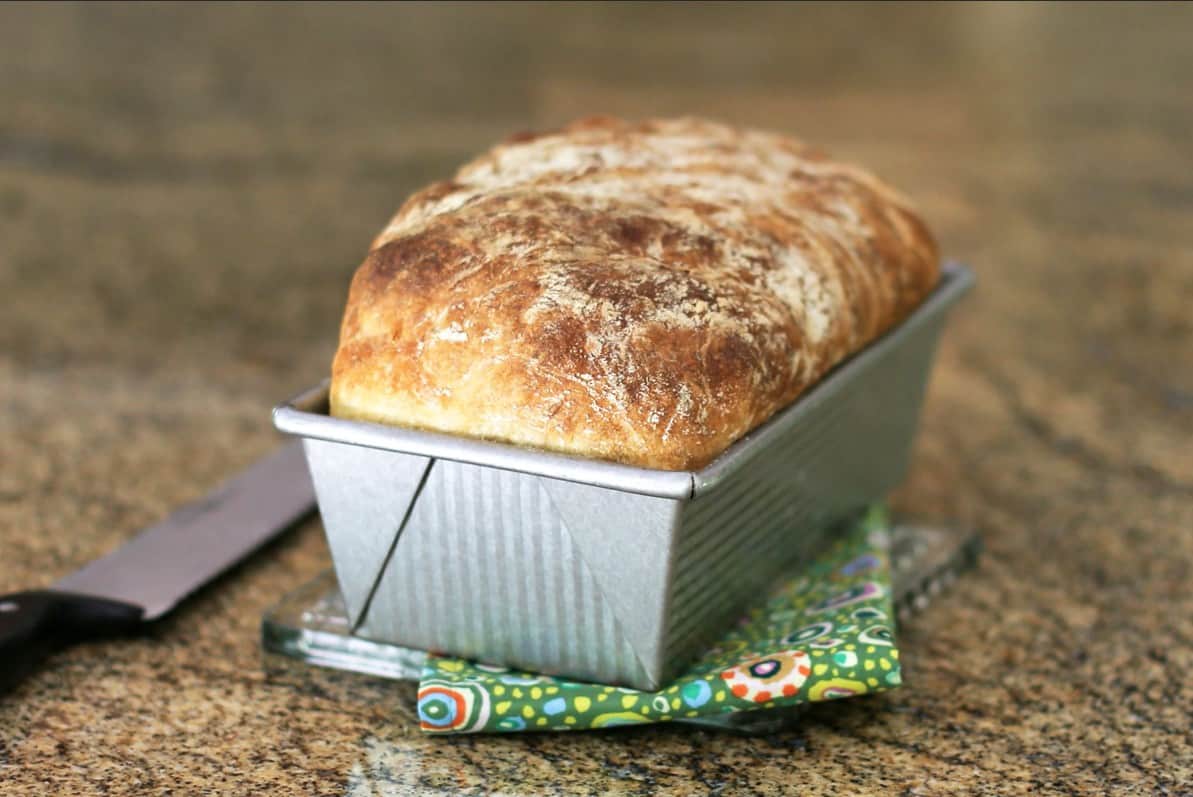
Heat conduction
Different materials have different heat conduction. Loaf pans made of metal have good heat conduction so you will notice they heat faster compared to glass pans.
Metal pans also come in different colors. If you want a darker crust, you should opt for dark metal pans as they conduct heat better than their light counterparts.
Corners
Want to have a clean-looking loaf? Choose loaf pans with sharp corners as these tend to produce bread with a cleaner finish. If post-bake cleaning is a concern, opt for pans with rounded corners as they are easier to clean.
Loaf Pan Size Wrap-up
While this guide covers everything about loaf pan sizes, the final decision is yours. Your recipe, the kind of loaf pan you are using, and your skills are all crucial in achieving your desired baked creation.
Pin Now, Revisit Anytime!

Michael Johnson is the founder of Pan Mastery, Inspired by his blacksmith grandfather’s legacy has a deep appreciation for hand-crafted pots and pans, he provides invaluable guides, reviews, and recipes to enhance your culinary journey.

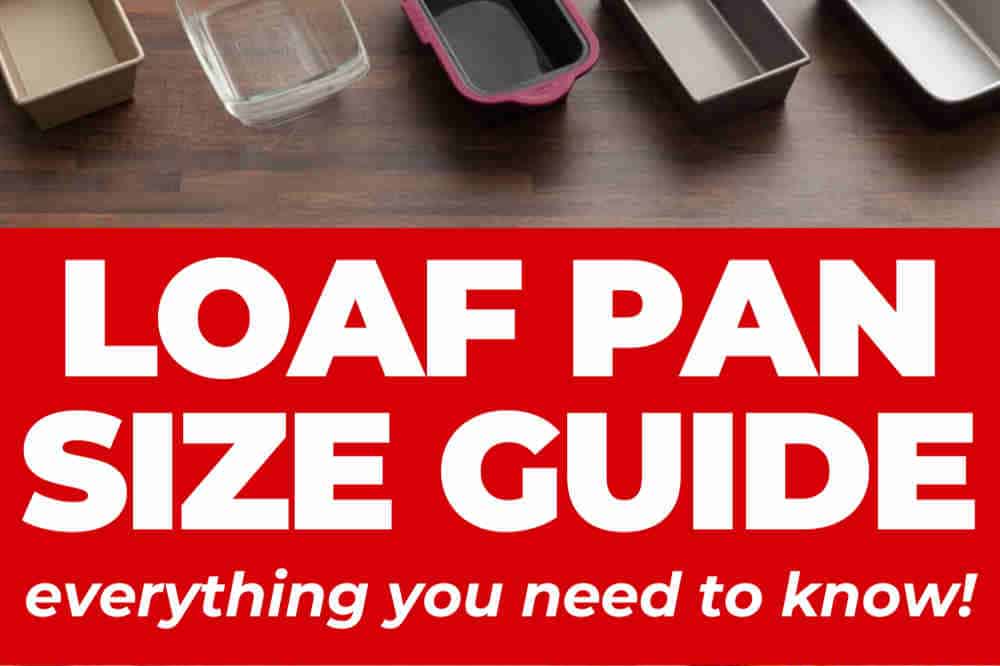
Thank you for the comprehensive article on loaf pan sizes. In measuring a loaf pan, since most pans are tapered, do we measure at the top of the pan or the bottom of the pan? I have two unmarked loaf pans and was wondering.
I have a metal and a glass pan, with the same problem.
Look up how to measure the volume of a trapezoid prism. 🙂
Look up how to measure the volume of a trapezoid prism. :)
How is a bread pan measured. Inside side to side at the top or at the bottom of the pan?
The measurements of a bread loaf pan are typically taken from the inside edges, considering both the length, width, and depth. Measurements are generally made from top edge to top edge, as the top of the pan usually represents the full size of the baked loaf of bread.
I ran across a cake recipe calling for a 31x11x7.5 cm (3 lb.) loaf pan. Is there such a pan? Thanx for your help